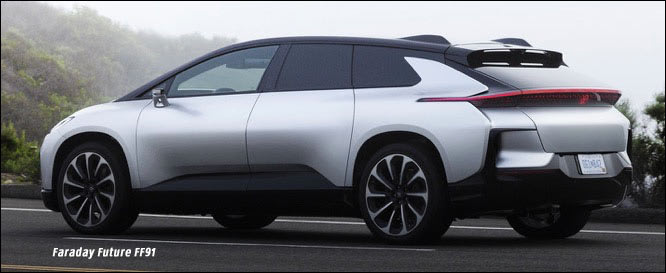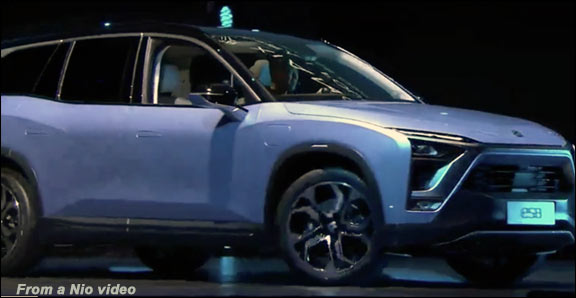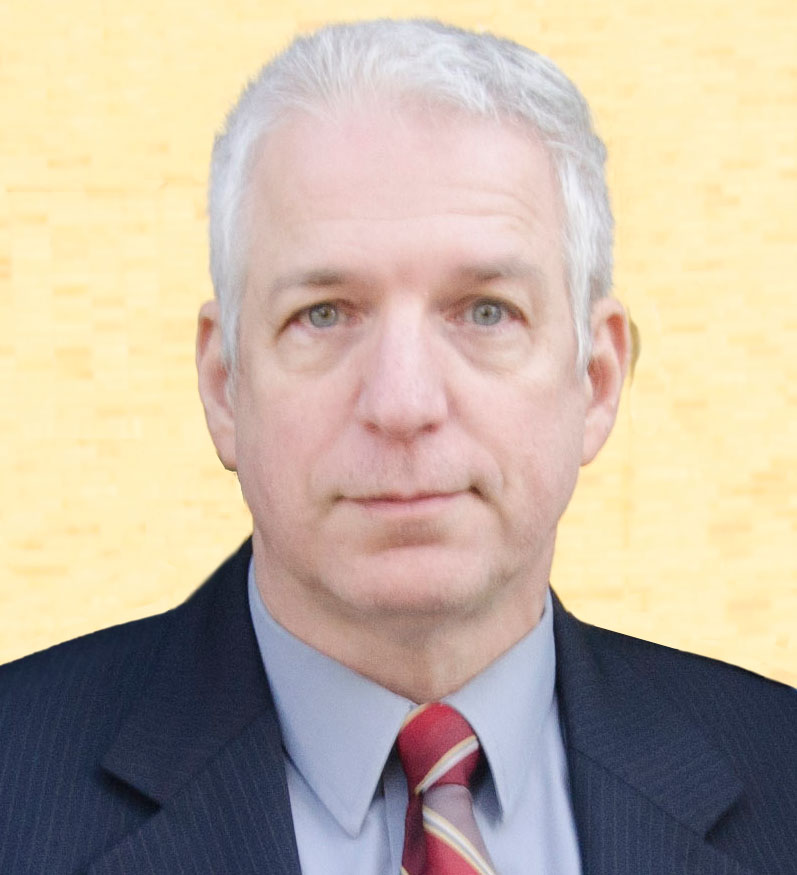
Elon Musk rose from riches to more riches by being one of the creators of an online payment system. It was not a “save-the-world” project, but an opportunistic one. Since then, his main legacy has been the Tesla electric car company, which has made a profit in just two quarters — never for a full year — selling sport-luxury cars. With roughly $45 billion in debt and a fairly small annual output of cars, Tesla is still valued alongside General Motors and Ford, but that’s likely to change — despite talk of “going private.”

First, we have NIO, a Chinese electric car maker which can claim one of the top spots in the records of Germany’s Nürburgring; that company is planning a $2 billion public offering, with a listing on the New York Stock Exchange. The company’s first vehicle costs around $65,000, between the actual price of the Model 3 and the Model S; it has a 355 km driving range, using a liquid-cooled 70 kWh battery pack. William Li’s company, started in 2014, has 4,000 employees.

Then we have the company that anticipated Tesla and came very, very close to having a working car long before Elon Musk did it — Fisker, now owned by Faraday Future. That name is rather clever; Michael Faraday was an acclaimed scientist, largely forgotten by the movie-makers and TV show writers who today praise Nikola Tesla and demonize Thomas Edison. Neither Tesla and Edison were modest, and both were, at heart, scientists working on commercial applications of new discoveries. Faraday let others commercialize; he worked on pure discovery. He also was not a self-promoter, as both Tesla and Edison were (though promotion of Edison, in fairness, was largely done by others in his name, sometimes to his disgust).
In any case, a Chinese company called Evergrande Health Industry Group owns 45% of Faraday Future; so it may be no surprise that Faraday’s headquarters has just been set up in China. A rapid expansion is planned, to the tune of five R&D and production sites over the next ten years, with a targeted five million vehicles per year capacity by 2028. That may be just as much bluster as Elon Musk’s wild claims, especially since so far they’ve got one model, the high-end FF91, which is made in small numbers in the United States.

More to the point, everyone else on the planet is planning to make pure electric cars, because the secret is out — they’re often faster than gasoline powered cars. Porsche, BMW, and Jaguar are already there, and Maserati (gasoline vehicle pictured), Volkswagen, Alfa Romeo, Audi, and others are coming. Lexus, oddly, was caught flat-footed on the trend, though Toyota essentially started the modern electrification trend (people tend to forget that, since it was so long ago, and Honda’s copycat Insight arrived in the USA before the Prius did). Oh, and while BMW started out with fairly tame electrics, let’s not be fooled by that — BMW knows its credibility is on the line and will be doing “Tesla fighters” soon enough.
How can Tesla really stand up to Porsche, BMW, and Maserati? No matter how bad Alfa Romeo’s launch quality was, Tesla’s current production seems far worse; I don’t believe any Italian or German car has routinely lost bumpers “because it’s raining” in decades, but that’s how Tesla build ’em. Real car companies don’t build high-precision vehicles in tents, or forget to test in the rain, because, well, they can do an over-the-air update for that, right?
Elon Musk is likely trying to figure out how to cash out now, not next year, but now, while the stock market is peaking and before people realize that Porsche and Maserati are just as desirable for high-end buyers as Tesla. With dozens of well-funded Chinese companies, the big German houses, the Italian premium brands, Lexus, and General Motors all preparing to launch cars in “Tesla territory” (which, had things been just a little different, would be “Fisker territory”), the value of Musk’s empire is bound to fall to nothing.
By the time Tesla crashes, though, Musk will have cashed out — or at least gotten as much cash out as he dares — and the only ones on the hook will be banks, investors, and, oh, right, the people who bought his cars. We’ve seen it before; Donald Trump has gone under several times, and he’s never left holding the bag. One of the banks that has lent to Tesla, has lent to Musk; and he’s likely to have figured out a way to store the cash where it can’t be touched.
I could be wrong about all this, I admit. Maybe he really is working for the good of mankind, selling luxury vehicles and flamethrowers, albeit with a terrible safety record, “autonomous” systems that can’t tell a truck from the sky because he wouldn’t use both radar and video (like nearly everyone else did), and almost all the quality of the Yugo. Maybe Tesla will triumph over everyone, though the company’s never lived up to the promise before. We’ll probably find out in the next two years.

David Zatz has been writing about cars and trucks since the early 1990s, including books on the Dodge Viper, classic Jeeps, and Chrysler minivans. He also writes on organizational development and business at toolpack.com and covers Mac statistics software at macstats.org. David has been quoted by the New York Times, the Daily Telegraph, the Detroit News, and USA Today.

Leave a Reply